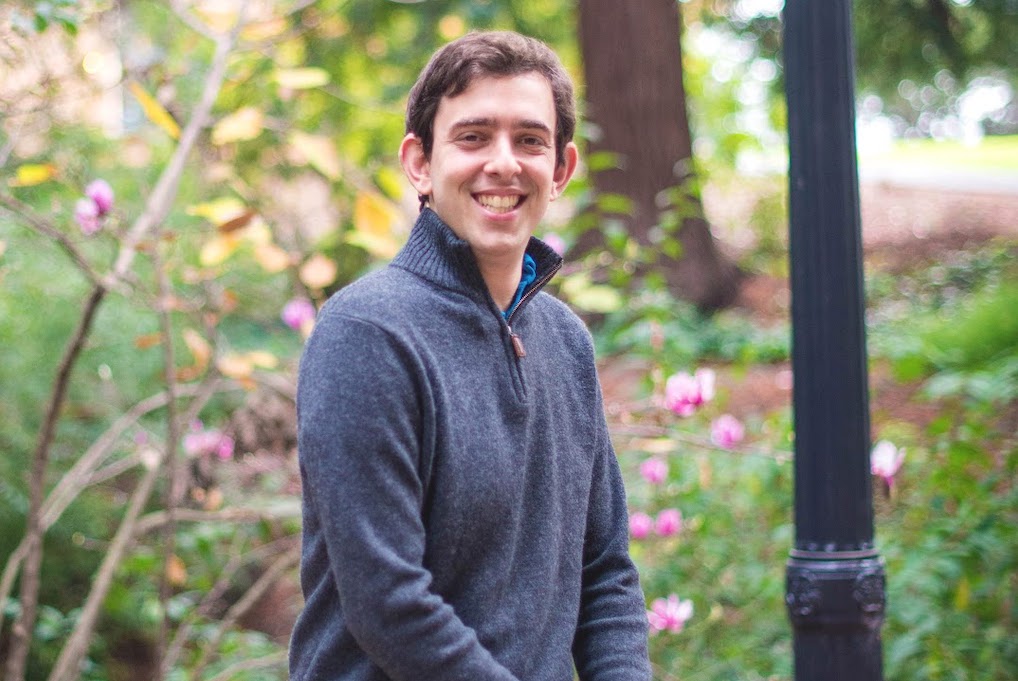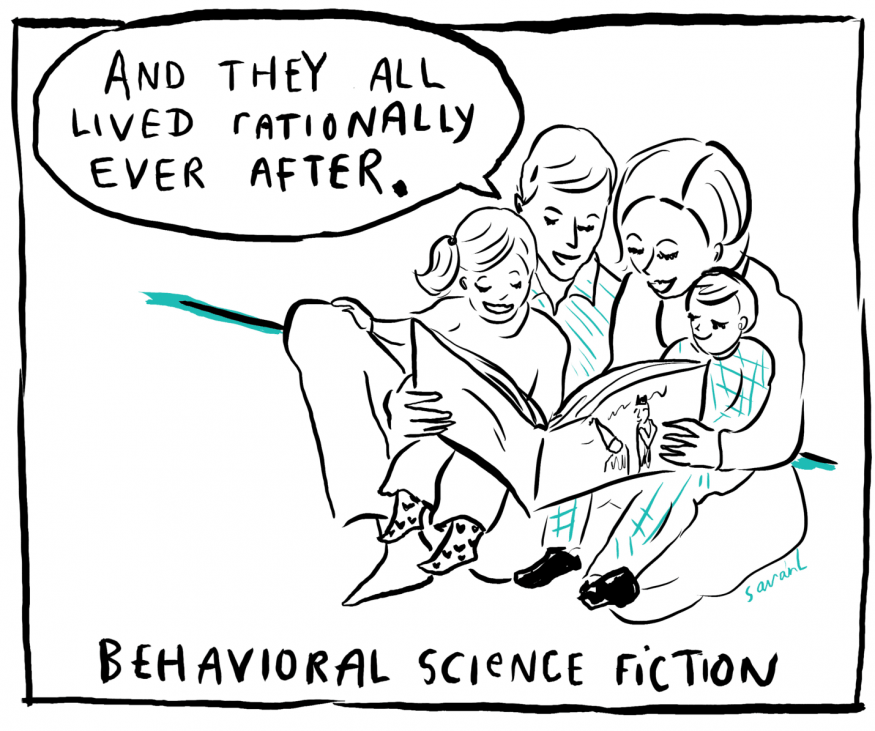
KONNOR VON EMSTER – DECEMBER 2ND, 2019 COPY-EDITOR: SHAWN SHIN
Zachary Bleemer is a 5th year economics PhD student at the University of California, Berkeley. His main area of research is on the long run effects of application review policies such as affirmative action (AA), eligibility in the local context (ELC), and holistic review. Zach also mentors many undergraduate research assistants and was the creator of the UC ClioMetric History Project. Learn more about his work here.
In this interview we first discuss Zach’s papers on admissions policies, then his ClioMetric History Project work, capped by advice to aspiring RA’s and grad students.
Konnor von Emster: Zach, thank you so much for meeting with me today. To start off, would you mind giving our readers a quick synopsis of your education and research thus far?
Zachary Bleemer: Sure—I did my undergraduate at Amherst College. I had three majors: in economics, but also math and philosophy. I then went and worked at the New York Fed [Federal Reserve] for 2 years. I was primarily working on a project that had to do with student debt. The massive accumulation of student debt—the impact of student debt—for post graduate outcomes for college students, in particular. We were interested in students who were moving home with their parents after they graduated. We also thought that this also had ramifications for the housing market because so many [new graduates] were moving back into their parents’ homes instead of purchasing a new place. So I spent two years working on questions like that for the New York Fed, then came here as a PhD student.
My current research agenda examines the long-run ramifications of a long variety of university policies, primarily focusing on university admissions, but also looking at major choices and interactions between students and professors. This work allows me to get a sense of how these policies shape the long-run outcomes of young people who are making extremely important choices with very limited information, and it turns out that which university you go to or which major you choose is extremely impactful of the kind of life you live after you leave university.
KVE: What inspired you to specifically dive into that field? The one of regarding education equality in that of student loans, affirmative action, ELC, etc….?
ZB: I came out of undergrad very interested in how people decided what to do with their lives. I saw my peers making big choices, and while some choices seemed good, and others did not. I just became interested in analyzing what mattered, and what didn’t, in these decisions made by young people and what the repercussions of those choices were. Naturally, I became interested in policies that forced people to choose one way or another, specifically by asking: “what would have happened if people made a different choice?” For instance, race-based affirmative action is a policy that provides access to selective universities to disadvantaged groups of students. I think this is interesting for two reasons. One reason is on the equity side; these are students who otherwise would not have had access to tremendous educational resources, so as universities phase out race based affirmative action policies, they contribute to heightening social immobility in the United States. Secondly, these policies are interesting because they let you ask the question: “what would happen if people didn’t have access to these selective universities?” I have a lot of friends who chose against going to such selective universities. I come from rural Pennsylvania, and most of my friends went to local universities, so affirmative action was a way of studying two groups of people: those who get into selective research universities, and others who don’t. After this division, you can follow them along and see what happens to people who make the selective university choice. Overall, [I think] Affirmative action is very positively impactful to targeted students, as university enrollment is very economically advantageous for young people.
KVE: You looked a lot at the mismatch hypothesis in that study; can you explain a bit more about that?
ZB: Thomas Sowell is a prominent, conservative economist, who in the 1970s, wrote a book about the ways in which affirmative action could be harmful to the black and Hispanic students that it targets. He makes a number of arguments, and the central argument of which is the mismatch hypothesis: the notion that taking a student with a low measured preparedness—someone of which has low standardized test scores for instance—and admitting them and ultimately encouraging them to enroll at a selective research university where they will really be different than their peers in the sense that they will have lower test scores, often have lower income. Sowell was concerned that this would be, in the long run, damaging to these students because they would have a difficult time competing in their courses and they would get pushed out of lucrative and difficult fields. They would also be less likely to graduate because they are having a hard time getting by in college, and he thought these could lead to long run labor market declines for targeted students. This has recently been picked up by Richard Sander, who is a law professor and economist at UCLA, who has been a strong proponent of ending affirmative action policies at selective universities. And my research suggests that this hypothesis is false. In other words, the notion that low-testing black or Hispanic students who enroll in selective research institutions as a result of access-oriented admissions policies like affirmative action might have been harmed is false. It turns out that they’re likelihood of graduating increases under affirmative action. Although there’s no measurable impact on their likelihood of earning lucrative, challenging majors in STEM fields, for instance, their long run labor market outcomes do improve.
KVE: Do you think it’s almost harmful to take up these affirmative action policies or is there a better solution, such as “Eligibility in the Local Context?” Or can you speak to the ideal solution?
ZB: Let me first try to quantify the ramification of ending affirmative action. The University of California has not used race based affirmative action in their undergraduate admissions since 1998. If you compare long-run labor market outcomes for black and Hispanic applicants to the university in 1997 (when they still had affirmative action), verses 1998, what you see is about 700 students per year who no longer attended the University of California at all. Based on the absence of race-based affirmative action, there are far more students who got pushed down the selectivity rungs within the University of California. They were previously able to go to Berkeley, but now they go to San Diego, etc. What that means is 15 years later, when these students are in their early 30s, California has about 20,000 young black and Hispanic workers who earn more than $100k/year; these are a wealthy group of underrepresented minorities, composed of high-earning young people. However, because we ended affirmative action, that group declined in size by about 3%. Call it 600-700 people who would’ve been high earning black or Hispanic workers in California, who now weren’t because we ended affirmative action. The ramifications are modest but real.
KVE: And it’s certainly not the opposite trend, as suggested by the mismatch hypothesis.
ZB: Yes, that’s certainly important. To give you a sense of scale, ending affirmative action was harmful to these targeted groups. You brought up Eligibility in the Local Context (ELC), which was the University of California’s attempt at a race-neutral response to ending its affirmative action program. The idea is that the university would guarantee admission to 4% of students from every high school in the state of California. Because of dramatic heterogeneity across California high schools, you can imagine that there’s good high schools and bad high schools largely determined by local income. At good high schools, the top 4% of kids could already get into a UC school and the program does nothing; but at a bad high school, the program is extremely impactful. So at these low high schools, this was targeting students who had already enrolled at a local community college and sending them a letter saying: you’ve been guaranteed admission to the University of California. So this was a radical change for those impacted students. And again, as with the case of affirmative action, what happens to those students? They become more likely to earn college degrees, more likely to enroll in graduate school, and their early career earnings are substantially higher. In fact the benefits to students scale in regards to the negative quality of their counterfactual. The worse the school the student would have otherwise gone to, the greater the benefit of getting pulled into these selective public research universities in California. That’s exactly the opposite of the mismatch hypothesis, which states the poorer the fit of the student, the harder time they’re going to have at a better university. In fact, the benefits positively scale for the low quality students. Your question of whether one policy or the other is optimal for the university is fundamentally a question of tradeoffs. There are a lot of types of disadvantaged young people and they all benefit from selective research universities, or at least many of these groups. It’s a policy choice of who to allocate selective university enrollment to. Both of those policies were largely impactful, ELC a little bit smaller than Affirmative Action but still quite large at 100s of students a year. It’s not the role of a researcher to say who should be given educational resources; all that I can say is that both of those groups were extremely positively impacted.
KVE: Do you think this research could inform other states and selective universities’ admission policies?
ZB: Yes, absolutely. Affirmative action policies and other race-based affirmative action policies are waning as a result of political movements and judicial actions. Public and private universities are now looking for alternative ways of targeting disadvantaged students and providing educational resources to them. And very much motivating this work I’ve done in Eligibility in the Local Context in California has been to try to lay out the advantages of this particular alternative program, guaranteeing admission to students in each high school in the state. One state was already using this admissions policy before California, which was Texas. Florida and Georgia have implemented similar policies since. A lot of other states are looking at whether to implement this kind of policy and yes, I expect that this work will be helpful to them to gather a sense of whether this policy would help the students they’re targeting and the universities they’re affecting.
KVE: Are there any other similar policies that you are looking into?
ZB: The next policy that I will focus on and have done a little bit of work on is “Holistic Review.” So this is a very commonly used admissions policy at public and private universities; the idea of this policy is to not use fixed weights across applicants’ applications in determining who should be admitted to the university, but instead looking at the whole student. Since there are many components of the [college] application, the policy will make a choice based on all aspects in combination to determine applications. Holistic review looks in the data a lot like an affirmative action program, in that switching to a holistic review policy substantially increases black and Hispanic admissions, as well as students with low household income and other socioeconomic disadvantages.
KVE: Just to clarify, this is a switch from a non-holistic review process that purely looks at test scores and GPA?
ZB: That’s right. Prior to holistic review, the universities I’ve studied still ask for the full application, but have a fixed set of weights across the components. 15% is test scores, 10% is high school grades, etc…. And there’s relative inflexibility of an essay overriding the information gained from test scores. In holistic review there is more flexibility; you can learn about a student’s disadvantage from their essay, or access to educational opportunity, and reweight a student’s test scores with that new information. The last thing I will briefly say is that the University of California is considering eliminating the SAT from its application. That would be a big choice that will likely be made next year. And that would act as an access-oriented admissions policy. If you’re not able to target admissions towards high testing students, then the number of disadvantaged applicants would increase. So that’s another policy that’s of interest to some policy makers.
KVE: Well, that seems to be all the time we have. Thanks so much for talking with me!
ZB: Of course Konnor. It has been a pleasure.
Featured Image: Zachary Bleemer
Disclaimer: The views published in this journal are those of the individual authors or speakers and do not necessarily reflect the position or policy of Berkeley Economic Review staff, the Undergraduate Economics Association, the UC Berkeley Economics Department and faculty, or the University of California, Berkeley in general.




Valuable information. Fortunate me I discovered your web site accidentally, and I’m stunned why
this accident did not came about in advance! I bookmarked it.